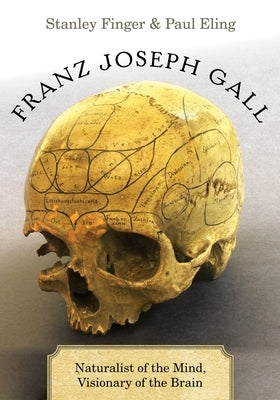Oxford University Press, USA
Franz Joseph Gall: Naturalist of the Mind, Visionary of the Brain
Franz Joseph Gall: Naturalist of the Mind, Visionary of the Brain
Couldn't load pickup availability
physician-scientist, who strove to answer timely questions about the mind, brain, and behavior. In many ways a remarkable visionary, his seminal ideas would become tenets of modern behavioral neuroscience. Among other things, he was the first scientist to promote publicly the idea of specialized
cortical areas for diverse higher functions, while taking metaphysics out of his new science of mind. Moreover, although he obviously placed too much emphasis on tell-tale skull features (mistakenly believing that the cranium faithfully reflects the features of underlying brain areas), he fully
understood the strength of convergent operations, conducting neuroanatomical, developmental, cross-species, gender-comparison, and brain-damage studies on both humans and animals in his attempts to unravel the mysteries of brain organization. Rather than looking upon Gall's organology as one of science's great mistakes, this book provides a fresh look at the man and his doctrine. The authors delve into his motives, what was known about the brain during the 1790s, and the cultural demands of his time. Gall is rightfully presented as
an early-19th-century biologist, anthropologist, philosopher, and physician with an inquisitive mind and a challenging agenda--namely, how to account for species and individual differences in behavior. In this well-researched book, readers learn why, starting as a young physician in Vienna and
continuing his life's work in Paris, he chose to study the mind and the brain, why he employed his various methods, why he relied so heavily on cranial features, and why he wrote what he did in his books. Frequently using Gall's own words, they show his impact in various domains, including his
approach to the insane and criminals, before concluding with his final illness and more lasting legacy.
Author: Stanley Finger, Paul Eling
Publisher: Oxford University Press, USA
Published: 05/28/2019
Pages: 584
Binding Type: Hardcover
Weight: 2.70lbs
Size: 10.10h x 7.10w x 1.60d
ISBN: 9780190464622
About the Author
Stanley Finger received his PhD from Indiana University and has been on the faculty of Washington University in St. Louis since that time. His is currently Professor Emeritus in the Department of Psychological and Brain Sciences at Washington University, and affiliated with the school's History of Medicine Program. His focus has been on the history of the neurosciences, notably brain and behavior, electric fishes in the history of neurophysiology, Benjamin Franklin's medicine, and how the neurosciences have long been reflected in the arts (e.g., painting, literature, and music). He has served as the editor of the Journal of the History of the Neurosciences for 20 years; was the first President of the International Society for the History of the Neurosciences; and has received many honors, including the latter society's lifetime achievement award in 2016.
This title is not returnable
Share


